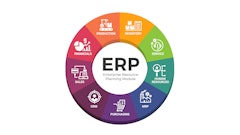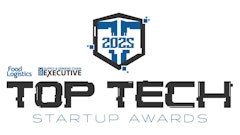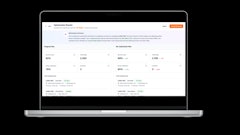In an age of "total informational awareness," when companies can get instantaneous access to information about virtually anything happening anywhere in their operations at any time, how does one cut through the clutter and data overload, to tease out just those discrete pieces of information which require immediate attention?
Twenty years ago, consultants preached "management by exception." IT departments focused on creating daily or weekly reports to identify and highlight exceptions that workers or management needed to address.
Last decade, the buzz centered on "executive information systems"—reasonably flexible analytic engines designed to extract knowledge from data, to provide managers with actionable intelligence they could use to help them better understand and run their businesses.
Today, these concepts are being taken to a whole new level, with approaches to application design and dedicated software systems that revolve around "event management."
The idea is to set up a series of rules and criteria through which all transaction data is sifted in real time, in order to identify situations that require or warrant human intervention—as they are developing. To varying degrees, event management systems also provide the means for the responsible parties to take action on each situation, or at least record their responses.
This information, in turn, is maintained in the system, creating a data bank of events and responses that can be analyzed and searched going forward, to help deal with, eliminate, or take better advantage of similar business events when they recur in the future.
"We see this approach as a way to increase the value of human capital, and improve human productivity," comments Karin Bursa, vice president of marketing, Logility Inc, Atlanta. "A lot of IT applications over the years have helped tremendously with number crunching, relieving people of a huge burden. Now the next step is to take these human resources that have been freed up, and focus them where they can do the most good."
This sort of approach, Bursa notes, can be leveraged in a variety of ways.
Logility's strategy is to embed event management capabilities into the fundamental architecture of its Voyager solution, rather than market a separate "event management" system.
"It's a part of the basic underpinning that brings all the different functional areas together within the Voyager suite," Bursa explains, noting that Logility has prepackaged more than 100 basic alerts within its Voyager applications. Each of these alerts, in turn, can be tailored according to a variety of business criteria, threshold types and notification options.
"So really there are hundreds of different ways those hundred or so prepackaged alerts can be deployed across various scenarios," she points out.
Among the kinds of situations and events users commonly track via alerts are thresholds related to forecast accuracy, whether at a category or SKU level, or for a particular distribution center, customer or channel. Other popular alerts are based on perfect order measures, such as percentage of orders delivered on time, in full, and in perfect condition.
Users can take a single alert and apply it in different ways to different subjects or fields, such as individual customers, SKUs, or different warehouses, geographic markets, or channels, defining a unique set of targets and thresholds for each object.
"The beauty of the fact that all this is built right into our supply chain suite, is that when someone gets an alert, the notification automatically links them to the appropriate place within an application to begin their investigation and resolution. This level of integration really speeds up the process of analysis and problem solving," Bursa says.
Users can choose which individuals in the organization will be notified, and how, when particular performance indicators fall outside of different specific tolerances.
"The account executive responsible for a key customer like Wal-Mart, for example, may want to know about any order that is short, or delayed, or otherwise falls short of some specified goal. He can then pick up the phone and immediately start dealing with the situation and soothing the customer before a problem arises. He might call to say the shipment is on the way, but we missed our dock window, we'll be there four hours later. Then a new receiving appointment can be scheduled, or whatever else is necessary can be done to minimize disruption to the customer," she points out.
The whole point of the system, Bursa adds, is to accelerate communication across an organization, to help people approach situations proactively and prioritize where to put their attention.
"It's much better to prevent a late order than to report a late order," Bursa observes. "If you do quarterly reporting on performance, you may see where your challenges were. But alert notification capabilities help you identify and head off problems right as they start to occur."
Add It On
Another system provider, Atlanta-based Infor, incorporates event management into its supply chain management package, but also provides an event management system as a separate, standalone product. Companies can tie this event management solution into their existing enterprise system or other applications, with varying degrees of integration.
"The system allows you to connect to any of your back end programs, from supply chain management, warehouse and transportation, inventory management, planning and forecasting, all the way out to your financial document management systems. You decide what events or situations within those functional areas you wish to monitor," Kaushal Vyas, Infor senior product manager, explains.
Rather than prepackaging alerts, he notes, Infor provides simple tools that let users create and monitor all of their own business rules, simple or complex.
"Once these rules are created, they act across whatever different systems you want to monitor. Reports on exceptions can also be sent out in multiple ways: by email, phone call, or pager for example, informing the appropriate human resources in real time that a particular exception has occurred. They can be used to track anything from something as simple as stock level—what products are available where and in what quantities—to situations with lead times or expiration dates, and many others."
In addition to such plain, straightforward criteria, companies can also develop more complex screens by starting with a simple rule and stringing several steps together, Vyas points out.
"You can specify that if a certain event doesn't happen within a certain amount of time, for example, if a certain quantity of a specific item is not received within the next two hours, then a particular resource will be notified," he explains.
Several differentiators help make Infor's standalone event management system a best-in-class solution, says vice president, product marketing, Eric Nilsson. One is that "besides enabling companies to create these monitors and notifications, we also provide the framework for collaboratively managing the response to an exception, once it's been identified.
"When I get a notification that says this exception has happened, for example, not only can I go into the exception, do research, take action, and close it. I can also perform any of these activities in collaboration with other resources. For example, I might examine an exception, and then forward it to someone else with a directive that this is their responsibility to fix. Then, as they address the problem, I can continue to monitor the resolution."
Lawson Software, St. Paul, MN, another enterprise systems designer that builds "smart notification" capabilities into its applications suite, also provides tools to help individuals in a company collaborate as they respond to alert situations. Lawson offers an inside-the-firewall instant messaging system which links individuals viewing notifications or reports to other employees who have knowledge about the content being viewed.
"Collaboration using IM between parties in real time, viewing identical information, helps lead to better and faster decisions," the company points out.
Another key feature of event management systems is their ability to accumulate repositories of information on events and solutions that can be easily accessed when similar situations recur, or for strategic analysis.
Nilsson says one of Infor's strengths is the way its solution weaves these capabilities into companies' existing applications.
"Over time, the system builds up an interactive database within your own resources, containing detailed information about how previous exceptions were solved, and suggestions as to how the current situation could be handled," he explains.
"Going forward, you can then track patterns and trends, and not only analyze whether specific areas or resources are having recurring problems, but also investigate what the root causes were of those previous events. You can also use the data to evaluate how well various prior attempts at resolving a problem succeeded. This enables companies to continually refine their performance."
Logility's Bursa adds that because its embedded event management system creates a full audit trail any time an alert is issued, the Voyager system also lets users track who made any adjustments in response to the notification, whether they reallocated inventory, or changed a forecast.
"Then they can also rerun that event, to see if the response created any kind of ripple effect. For example, by fixing one problem, were others created? Users can also use the system to model various possible responses, to identify the impact of a decision on various factors, to help decide on reasonable trade-offs."
Like Logility, Infor stresses the ability event management confers on companies to speed up their response to situations, enabling them to deal proactively with occurrences before they actually become problems.
"In the past, people would set up reports on stock-outs. That's a very passive way to monitor in-stock performance. Stock-outs can occur, and nobody knows until they see the report," comments Nilsson.
"Now, you can have a system that monitors levels constantly, and at the minute a certain safety threshold is met, it will send out notifications to the appropriate individuals. The system can then also start an escalating process, so that if no action is taken within the first hour after a notification is sent, for example, the case is automatically escalated to a second designated person, and then on up to his boss if necessary.
"You can also set up the system to notify parties outside the company of pertinent events. In a low stock situation or stock-out, for example, you could have a web form automatically transmitted to the supplier of the item, where that vendor could key in a response such as the date the next shipment is scheduled to be sent out. Then the vendor's response as well would be monitored and work-flowed through system."
There are two ways clients can handle responses with Infor's event management solution, adds Vyas, depending how their systems are configured.
"One is they can look at the exception, then go to the originating transaction system and fix it there, and afterward record notes within forms and save those within the event management system. That's one of the more common ways people do it.
"If, however, their back end system is equipped for web services or APIs—in other words, has its transactions exposed—then it's possible to take action directly from within the event management software."
Infor, like Logility, also builds a number of predefined event notifications into its operational applications, such as its warehouse management system.
"We have common alerts like advance ship notifications, receiving appointments, various vendor performance measures, or if an order is not shipped by a scheduled date. We see our customers using these capabilities most frequently to monitor stock-out situations," Vyas comments.
A number of warehouse operations also use the notification system to help in handling refrigerated items.
"If something is pulled from the refrigerated area, and set down on the dock but not loaded immediately, the appropriate warehouse resource can get a notification warning them the item is sitting too long and needs to be moved," Vyas notes.
"Just as we include predefined alerts in our WMS, customers can also buy predefined monitors for the event management system," he adds. "If they want to customize, extend these or add new ones, we provide a very rich set of user interfaces to help them create new monitors against any back-end system."
At A Glance
Both Logility and Infor employ "dashboard" interfaces to help users organize and customize the way they interact with the event management function.
Upon log-in, users of Infor's system are immediately taken to "the exception desk," which shows, based on their specific authorizations, all new exceptions that fall under their concern, plus current exceptions still outstanding, and events that have been closed in the recent past.
"This is where users spend much of their time," Vyas says.
In addition, associates can access the event database, to create custom reports on past situations.
"They can use these reports to see what sorts of exceptions have happened in the recent past, to look for trends or recurring problems," he notes.
"Once customers notice a trend in a particular area, they'll often define additional monitors around it to help identify the root cause," Nilsson adds.
Logility's "control tower" is similarly designed to give users an overview of all situations requiring their attention in one quick glance. The dashboard shows all the key performance indicators an individual might track, with red, yellow and green lights to highlight and prioritize the most critical alerts.
"Users can also opt to receive alerts via phone or email if they prefer, instead of by logging onto a web browser," Bursa notes.
Although the "behind the scenes" data screening processes that drive event management systems can be quite complex, the ways users interface with these systems are fairly simple and intuitive. The software does the heavy lifting.
"A typical implementation of our event management system from scratch takes 30 days. Some companies are up in as little as two weeks," says Nilsson of Infor.
"It's a high ROI product," he adds, "because not only can it be implemented quickly, but it also provides actionable data very quickly."
Bursa notes that many of Logility's customers start by applying the system to short-term events like missed delivery windows.
"Then they back up and get more strategic, looking at forecast capabilities, for example. They start to set thresholds for what they expect to do in the market with specific products over the next six months, for example, and then when the orders start to come in, they can see if they're ahead of projections or behind," she says.
"And if the orders aren't coming in the quantities expected, they can consider quickly putting a promotion in place to move additional product, perhaps. The ability to react quickly to situations as they develop lets companies become much more aggressive about demand shaping."















